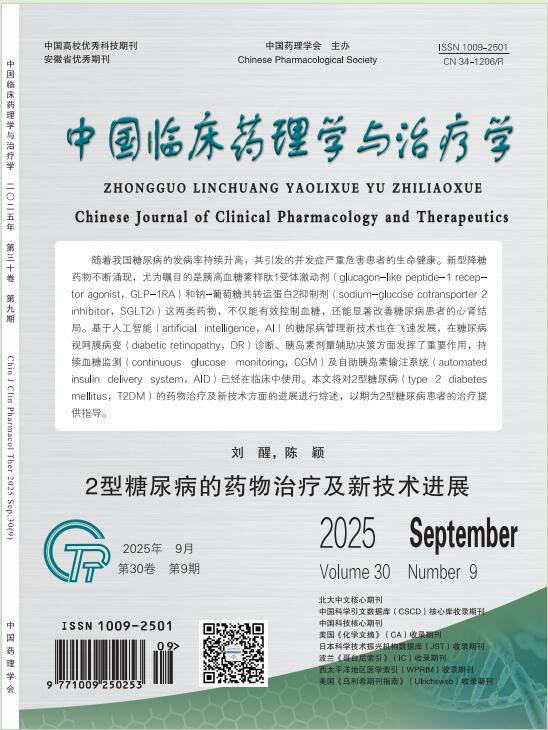Effect of lornoxicam on efficacy of PCSA with sufentanil in elderly patients after total hip replacement
YANG Yun-li, WEI Hu-ming, ZHANG Cheng-hua, HE Yan-fen, LU Cheng-rui
2014, 19(2):
190-195.
 Asbtract
(
210 )
Asbtract
(
210 )
 PDF (270KB)
(
520
)
References |
Related Articles |
Metrics
PDF (270KB)
(
520
)
References |
Related Articles |
Metrics
AIM: To evaluate the effect of lornoxicam on efficacy of PCSA with sufentanil after total hip replacement in elderly patients.METHODS: One hundred and twenty five ASA Ⅱ-Ⅲ patients aged 70-90 yrs after total hip replacement performed under general anesthesia were randomly divided into 5 groups(n=25 each)according to the composition of PCSA solution: group S1L(sufentanil 0.4 μg·kg-1·d-1+ lornoxicam 32 mg ),group S2L(sufentanil 0.6 μg·kg-1·d-1+ lornoxicam 32 mg),group S1(sufentanil 0.4 μg·kg-1·d-1), group S2( sufentanil 0.6 μg·kg-1·d-1)and group S3(sufentanil 0.8 μg·kg-1·d-1).In the five groups ,the drugs were diluted 100 mL of normal saline , a loading dose of 2 mL was given at the end of operation.The PCSA setting was as follows: background infusion at 2 mL/h, a bolus dose of 0.5 mL, lockout interval 15 min. The number of deliveries (D1) and the number of effective deliveries(D2), total satisfactory degree (TSD), SpO2, respiratory rate (RR), mean arterial pressure (MAP) and heart rate(HR), Visual analogue scale (VAS) and Ramsay sedation score (RSS) were recorded at 2, 4, 8, 12, 24 and 48 h after after loading dose of sufentanil. The adverse effects during analgesia period such as nausea and respiratory depression, vimiting, pruritis, somnolence were also recorded.RESULTS: The vilal signs was no significant change in four groups. During analgesia period the VAS, D1, D2 and TSD was significantly lower in group S2L than group S1L,S1 and group S2(P<0.05), no significant change as compared with group S3. RSS was significantly higher group S2L than group S1L and group S2(P<0.05).The percentage of vomiting, nausea, somnolence was significantly lower in group S2L than group S3(P<0.05).CONCLUSION: Lornoxicam can improve the efficacy of PCSA with sufentanil in elderly patients after total hip replacement with no significant adverse effect.


